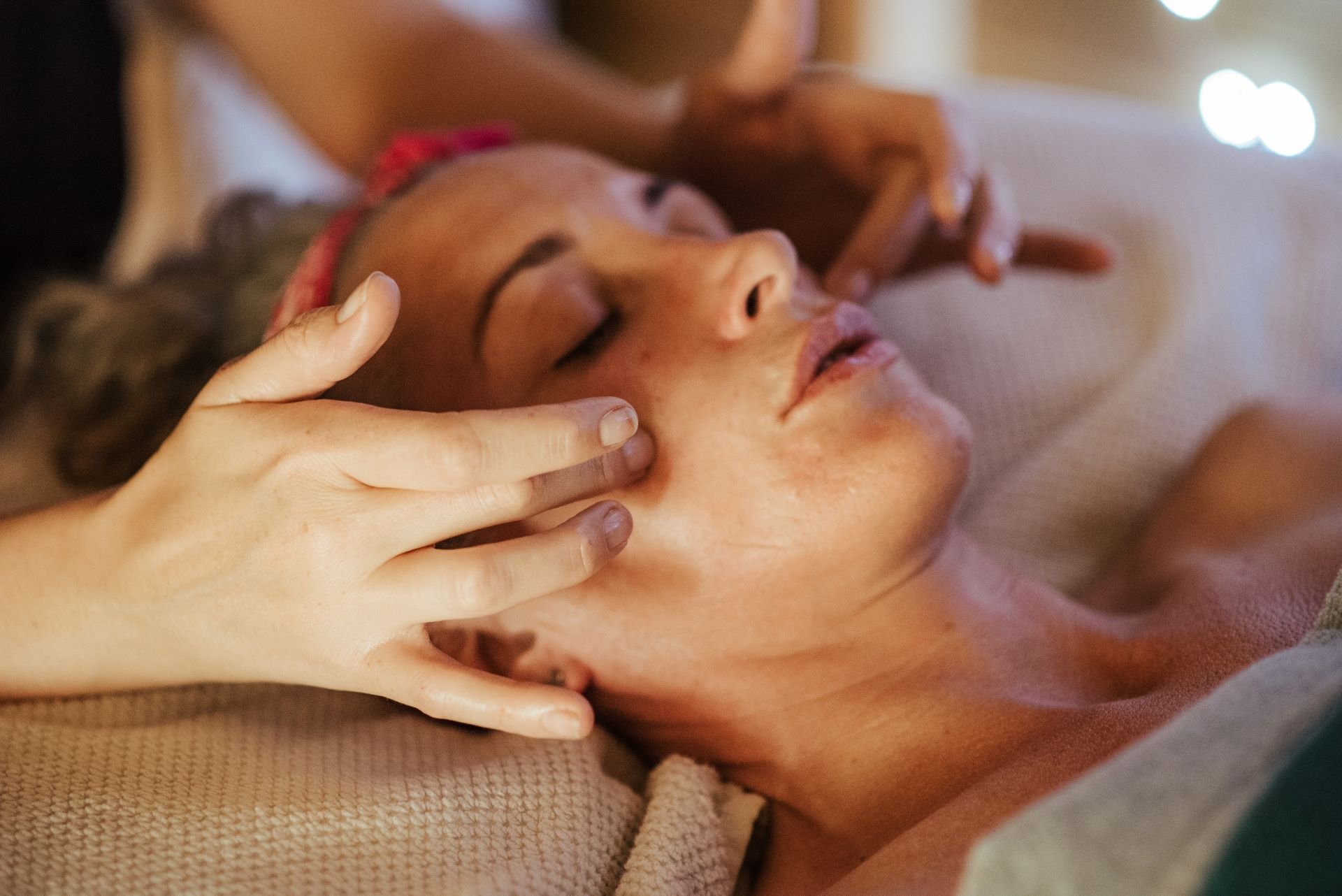Massage for TMJ Disorders: Relieving Jaw Tension and Pain
The wellness world is constantly expanding its horizons and exploring innovative methods to treat an array of health conditions: one particular method has gained traction recently, particularly for those who struggle with temporomandibular joint (TMJ) disorders: massage. Massage for TMJ can be an effective way to alleviate discomfort and improve quality of life, offering a natural, non-invasive solution to those living with this challenging condition.
After all, we all know just how effective massage therapy can be for both our emotional and our physical health - whether you’re opting for a Swedish massage or a best couples mobile massage in Miami, a massage session will always leave you feeling destressed, rejuvenated and calm.
But is massage effective for TMJ? Let’s take a look.
What is TMJ?
Temporomandibular Joint (TMJ) disorders represent a variety of problems associated with the jaw joint and the muscles controlling jaw movements. The temporomandibular joint acts as a sliding hinge, connecting your jawbone to your skull, and put simply, TMJ disorders can cause pain in the muscles and joints on either or both sides of your jaw. This condition can be temporary or last many years, and according to the National Institute of Dental and Craniofacial Research, around 10 million Americans suffer with this often debilitating condition. Symptoms of TMJ disorders can include jaw pain, difficulty chewing, facial pain, toothache, and an uncomfortable or locked jaw feeling.
What causes TMJ?
The exact cause of a person's TMJ disorder is often challenging to determine, most notably due to the fact that the pain could be due to a combination of factors, such as genetics, arthritis, or jaw injury. Some people who have jaw pain also tend to clench or grind their teeth (bruxism), although many people habitually clench or grind their teeth and never develop TMJ disorders.
TMJ disorders can also occur due to the erosion of the disk or the misalignment of the joint, both of which disrupt the smooth motion of the joint. Stress, which can cause a person to tighten facial and jaw muscles or clench the teeth, is another factor that can contribute to TMJ disorders.
Is massage therapy for TMJ effective?
A growing body of research suggests that massage therapy can be an effective tool in managing TMJ disorders. Specific techniques are designed to relax the jaw muscles, increase flexibility, and reduce overall muscle tension, leading to substantial relief from the symptoms of TMJ.
In one study, massage therapy was shown to be beneficial in reducing pain and improving maximum mouth opening range among participants with TMJ disorders. Further studies indicate that massage for TMJ can also help decrease anxiety and improve sleep, contributing to overall better quality of life.
These findings are encouraging for those who seek a non-invasive, natural approach to manage their TMJ disorder symptoms. However, it's crucial to ensure the massage therapy is performed by a qualified practitioner who understands the specific techniques and precautions associated with TMJ massage therapy.
How to treat TMJ with massage
There are several methods to perform massage for TMJ, each focusing on different areas of the face and neck. It's important to start gently, as the facial muscles are delicate, and a heavy hand can lead to additional discomfort. Here is a basic approach to an at-home TMJ massage:
Masseter muscle massage: This muscle is located at the angle of your jaw. Use your fingers to apply gentle pressure in a circular motion on this area, working from the top of the muscle (near your cheekbone) down to the lower part of your jaw.
Temporalis muscle massage: This muscle is found at the temples on each side of your forehead. Use your fingers or palms to apply gentle pressure and make small circles in this area.
Intraoral massage: With clean hands, you can also perform a gentle massage inside your mouth. Place a finger against the inner part of your cheek, and you'll feel a tough, muscular band, which is the inside part of the masseter muscle. Apply light pressure and perform gentle strokes.
Remember, the key is to be gentle and patient with your progress. It's also important to consult with a healthcare provider before beginning any new health regimen, including massage.
Professional massage therapists who specialize in TMJ disorders can provide a more comprehensive treatment, using techniques that can target deeper muscles and tissues involved in jaw function. They can also provide you with guidance and tips for continuing self-care at home.
The Bottom Line
While TMJ disorders can be frustrating and often painful, there are options available for managing the discomfort. Massage therapy for TMJ, whether done professionally or at home, can offer significant relief from symptoms, and can reduce muscle tension, increase flexibility, and improve overall quality of life. However, always consult with a healthcare provider before starting any new treatment plan.
FAQs
Can I treat my TMJ disorder solely with massage?
While massage can provide significant relief from TMJ symptoms, it's often most effective when used as part of a comprehensive treatment plan. This plan may also include pain relievers, exercises, stress management techniques, and in some cases, dental or medical interventions.
How often should I get a TMJ massage?
The frequency of massage will depend on the severity of your symptoms and the advice of your healthcare provider. Some people may benefit from daily self-massage, while others may prefer professional sessions once or twice a week.
Can TMJ massage make my symptoms worse?
If done correctly and gently, TMJ massage should not exacerbate your symptoms. However, if you feel increased pain or discomfort during or after a massage, you should stop and seek medical advice.

